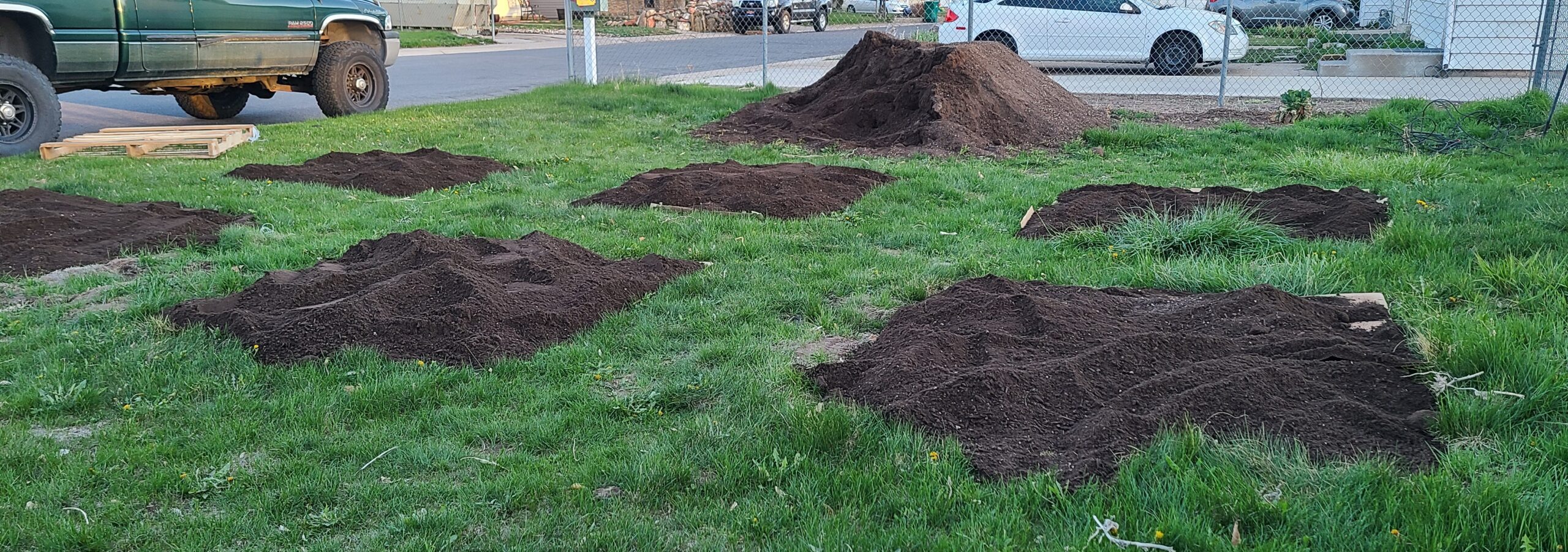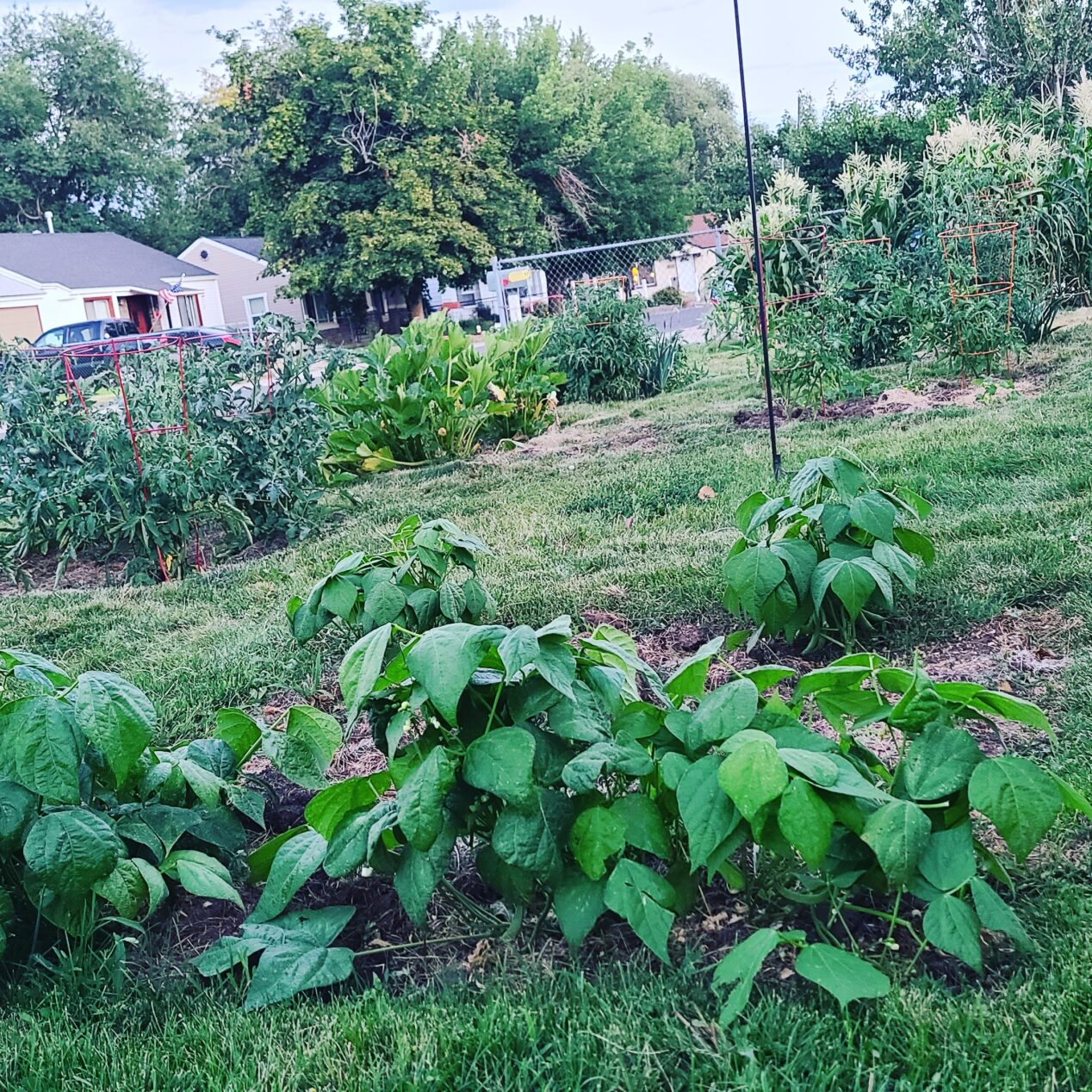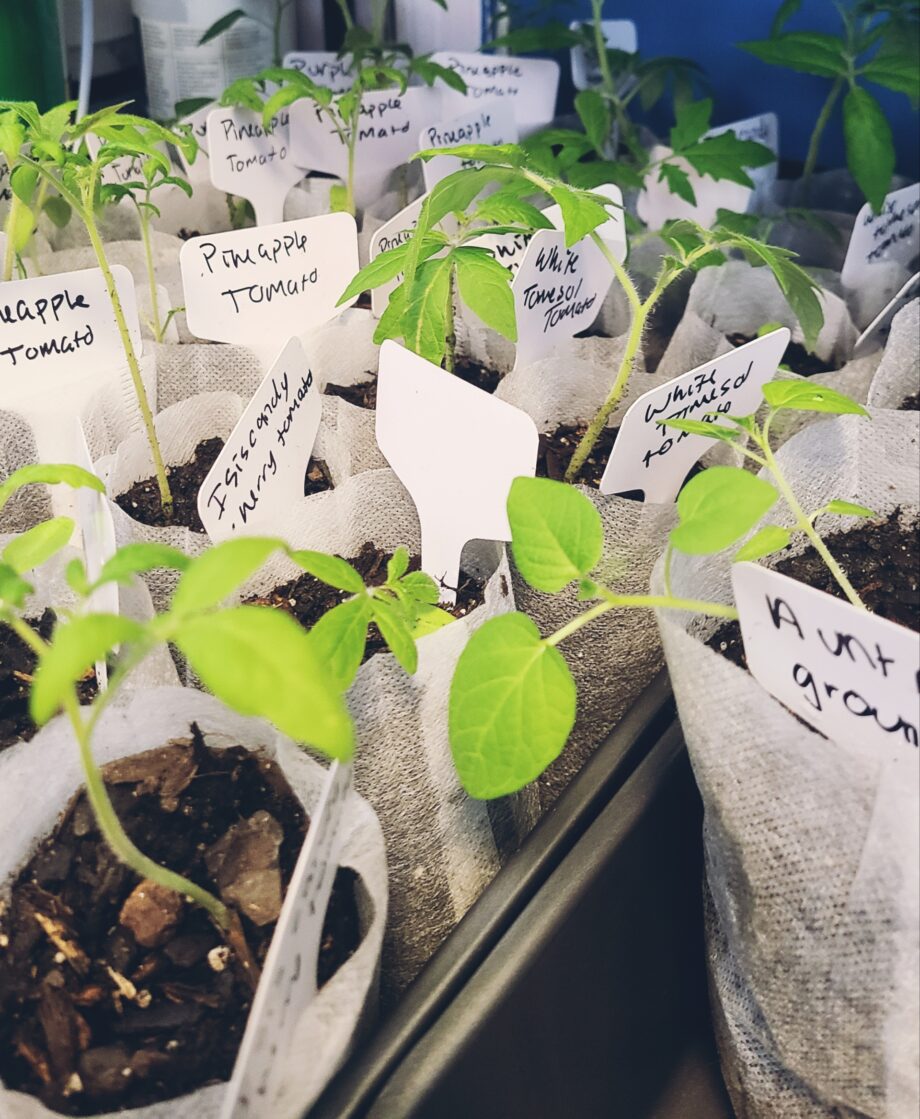It’s the weekend in April. That means it’s time to prep the beds and get them ready for planting! Because our expanded garden last year was a gut reaction to COVID, we didn’t do much in the way of amending the soil. Between that, and the fact that we got a late start, we didn’t end up with as much production as we had hoped. This year I wanted to try my hand at no-dig gardening.
For those of you who don’t know, no-dig is a method of gardening where you don’t disturb the soil from year to year. Every year you add new compost to the top of the soil from last year. The compost provides all the nutrients your plants need, and not disturbing the existing soil is supposed to help preserve the microbes of the existing soil and create healthy plants, which in turn produces more food. I became aware of this method from Charles Dowding’s YouTube channel.
Basically, if you are starting with grass or weeds, you put some cardboard over the area that will be your garden, then you add compost to the top of it. The cardboard will block the weeds so they can’t grow, and they will eventually die because of the lack of light. And since cardboard is biodegradable, it will break down.
Once the cardboard is in the area you want, you cover it with compost. In our case, we are using a topsoil compost mix. We don’t make our own compost (yet) so our most affordable option was to have it delivered instead of buying a bunch of bags from our local hardware store. Depending on where you live, sometimes you can get free or cheap compost from your local landfill. It doesn’t have to cost a lot of money to get quality dirt.

No-dig is different than what we have done in the past. My grandpa was an avid gardener until he passed away and every single year he would till up his garden. I naturally did the same, but it will be interesting to see how this method goes. I have seen some pretty impressive yields with this method in comparison to the till method, but from what I have seen, it takes a few years to really see the difference.

On a personal note, today was a family affair, Elizabeth had a blast digging in the dirt. I did too if I am being honest with myself. I love prepping the garden and getting it ready for all the good food in the coming months.
I am going to see how much of a difference the cardboard makes in weed control. I’ve added cardboard to 6 of our beds, tomorrow I’m going to weed the remaining beds and put some dirt in them. I’ll show you the progress as the year goes on.
A little before and after. You can definitely see the difference in quality in the soil.










